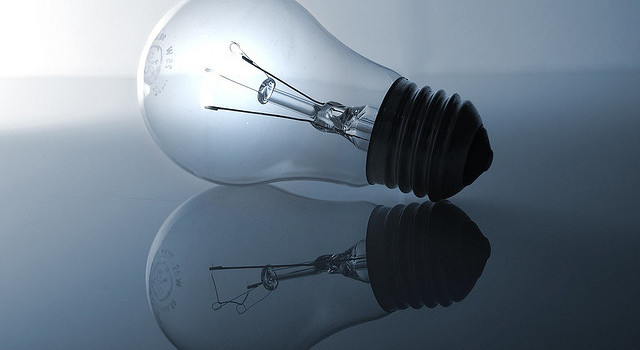
What exactly is a Negawatt?
Coined by famous economist Amory Lovins, the term simply refers to avoided energy use, or saved energy.
The simplest way of illustrating this is to imagine a 60-watt incandescent bulb producing light. If you replaced this with an 8-watt LED bulb you have saved 52 watts that can be used elsewhere. With your energy efficient bulb you are producing the same amount of light, but using less energy to do it. The 52 watts you are freeing up are referred to as negawatts.
The great thing about this is that every time we produce a negawatt, the amount of capacity in the grid can in theory decrease. But the idea is that we are not forcing people to cut their energy usage per say, but instead improving the energy efficiency of the appliances they use, which frees up the energy anyway.
For example a new energy efficient appliance should do exactly the same job as its older less efficient predecessor, but it should do it using less energy and hopefully to a better standard providing a better experience / greater comfort etc.
As we have seen in the UK with the proposed new Hinkley nuclear power plant, building new power stations from scratch is incredibly expensive. Producing negawatts is a much cheaper way to go. In fact, they have determined in the US that energy saving programmes have proved to be three times cheaper to implement than installing new capacity.
The importance of Negawatts to the Energy Companies
Historically energy companies have aimed to maximise their profits by producing electricity from the cheapest source available and then selling this at the highest price they can without dampening demand from consumers. Unfortunately the cheapest electricity comes from coal and gas.
This is a problem since the Government are now under a legal obligation to decarbonise our economy as a result of the Kyoto Protocol, therefore they need to exert regulatory pressure or provide an incentive to the energy companies to help achieve this.
Imagine then if negawatts were given a monetary value?
If this were the case, then capacity in the grid would not need to increase despite our energy demand continuing to rise. The theory goes that if one customer uses less energy, then the energy company can use this ‘saved energy’ to service more customers, and they would also still be financially rewarded as a result of producing the ‘negawatt’ for that individual.
In addition, giving negawatts a monetary value would be a far quicker way to resolve the diminishing headroom in our energy producing capacity, as well as being far cheaper than installing new capacity.
The ability to reduce peak demand means less reliance on importing costly electricity from our European neighbours. If you can forego producing a unit of electricity during peak times, and produce it another time, or not at all, you are being far more effective than simply saving energy generally over the course of a day. This is due to the peak load effect – 10% of the grid energy is used providing for the last 1% of demand, and by cutting that peak 1%, we are saving much more nationally than turning our lights off at night, even though as an individual you may save the same amount of money.
Encouraging Consumers to produce Negawatts
For a consumer though, they need an incentive too – this could be via an electricity efficiency Feed-in Tariff. So, similar to the feed-in tariffs paid to households who have installed solar PV, a payment would be made for every unit of electricity they saved. This should encourage unilateral take up of energy efficiency measures and things like the Green Deal would suddenly take off like a run away train. However this obviously kicks up the question of how we measure the amount of electricity saved. It appears we are putting an awful lot of faith into the smart grid! This is simply another requirement of the technology before it gets rolled out across the country.
So to summarise, in March 2013 when Greg Barker announced that ‘The era of the Negawatt has now arrived’ it was welcome news indeed – the only issue is how on earth we go about implementing it!












No Comments yet! Be the first one.